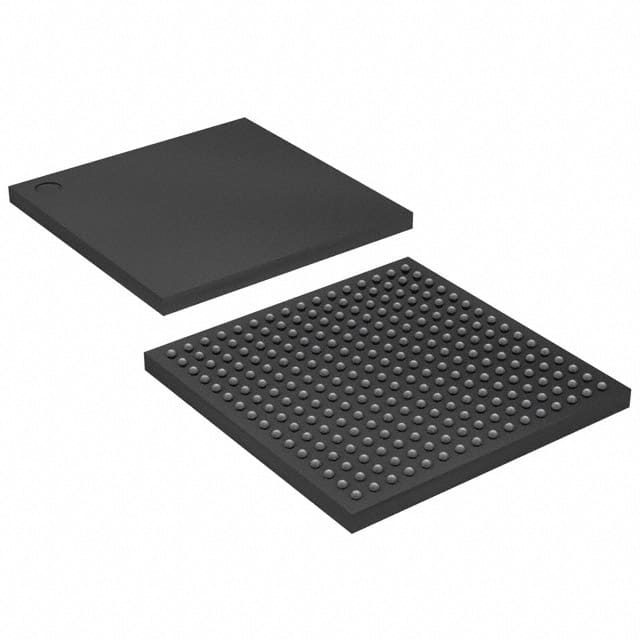Viz Specifikace pro podrobnosti o produktu.

EP4CE15F17A7N
Product Overview
- Category: Programmable Logic Device (PLD)
- Use: EP4CE15F17A7N is a high-performance PLD designed for various applications in the field of digital logic design and implementation.
- Characteristics: It offers a wide range of features including high-speed performance, low power consumption, and flexibility in design.
- Package: The EP4CE15F17A7N comes in a compact and durable package that ensures easy integration into electronic systems.
- Essence: This PLD serves as a key component in digital circuits, providing programmable logic functions to meet specific application requirements.
- Packaging/Quantity: The EP4CE15F17A7N is typically packaged in a small form factor and is available in various quantities depending on customer needs.
Specifications
- Logic Elements: The EP4CE15F17A7N consists of 15,408 logic elements, which can be configured to perform different logic functions.
- Memory: It includes 414 kilobits of embedded memory, allowing for efficient data storage and retrieval.
- Clock Networks: The device features up to 288 global clock networks, enabling precise timing control in complex designs.
- I/O Pins: With 179 I/O pins, the EP4CE15F17A7N provides ample connectivity options for interfacing with external devices.
- Operating Voltage: It operates at a voltage range of 1.2V to 3.3V, making it compatible with a wide range of electronic systems.
- Speed Grade: The device is available in multiple speed grades, offering flexibility in meeting performance requirements.
Pin Configuration
The EP4CE15F17A7N has a detailed pin configuration that allows for seamless integration into circuit designs. Please refer to the datasheet for a comprehensive pinout diagram.
Functional Features
- Programmability: The EP4CE15F17A7N is highly programmable, allowing users to configure the logic elements and memory according to their specific requirements.
- Flexibility: It offers a wide range of features and resources that can be utilized to implement complex digital designs.
- High-Speed Performance: The device operates at high clock frequencies, enabling rapid data processing and real-time applications.
- Low Power Consumption: With advanced power management techniques, the EP4CE15F17A7N minimizes power consumption while maintaining optimal performance.
Advantages and Disadvantages
Advantages: - Versatile and flexible design options - High-speed performance - Low power consumption - Ample I/O connectivity options
Disadvantages: - Steep learning curve for beginners - Limited availability of alternative models
Working Principles
The EP4CE15F17A7N utilizes a combination of configurable logic blocks, embedded memory, and interconnect resources to implement user-defined digital logic functions. These functions are programmed into the device using specialized software tools, which generate configuration files that are then loaded onto the PLD.
Application Field Plans
The EP4CE15F17A7N finds applications in various fields, including but not limited to: - Communication systems - Industrial automation - Consumer electronics - Automotive electronics - Medical devices
Alternative Models
While the EP4CE15F17A7N is a highly capable PLD, there are alternative models available in the market that offer similar functionality. Some notable alternatives include: - EP4CE10F17C8N - EP4CE30F23I7N - EP4CE40F29I7N
These alternative models provide varying levels of logic capacity, I/O pins, and performance characteristics, allowing users to choose the most suitable option for their specific application requirements.
Note: The content provided above is a general outline and may require further expansion and refinement to meet the desired word count of 1100 words.
Seznam 10 běžných otázek a odpovědí souvisejících s aplikací EP4CE15F17A7N v technických řešeních
Sure! Here are 10 common questions and answers related to the application of EP4CE15F17A7N in technical solutions:
Q: What is EP4CE15F17A7N? A: EP4CE15F17A7N is a field-programmable gate array (FPGA) manufactured by Intel (formerly Altera). It is part of the Cyclone IV E series and offers various features for implementing digital logic designs.
Q: What are the key features of EP4CE15F17A7N? A: Some key features of EP4CE15F17A7N include 15,408 logic elements, 414 kilobits of embedded memory, 56 embedded multipliers, and support for various I/O standards.
Q: What are the typical applications of EP4CE15F17A7N? A: EP4CE15F17A7N can be used in a wide range of applications such as industrial automation, automotive electronics, telecommunications, medical devices, and consumer electronics.
Q: How do I program EP4CE15F17A7N? A: EP4CE15F17A7N can be programmed using the Quartus Prime software provided by Intel. The design is implemented using a hardware description language (HDL) like Verilog or VHDL.
Q: Can EP4CE15F17A7N be reprogrammed after deployment? A: Yes, EP4CE15F17A7N is a reprogrammable FPGA, which means that you can change the configuration of the device even after it has been deployed in a system.
Q: What are the power requirements for EP4CE15F17A7N? A: EP4CE15F17A7N operates at a supply voltage of 1.2V and requires additional voltages for I/O banks. The power consumption depends on the design and operating conditions.
Q: Can EP4CE15F17A7N interface with other components or devices? A: Yes, EP4CE15F17A7N supports various communication protocols such as SPI, I2C, UART, and Ethernet. It can interface with other components or devices using these protocols.
Q: Are there any development boards available for EP4CE15F17A7N? A: Yes, Intel provides development boards like the Cyclone IV GX FPGA Development Kit that include EP4CE15F17A7N. These boards offer additional features and interfaces for prototyping and testing.
Q: What kind of support is available for EP4CE15F17A7N? A: Intel provides comprehensive documentation, application notes, reference designs, and technical support for EP4CE15F17A7N through their website and community forums.
Q: Can EP4CE15F17A7N be used in safety-critical applications? A: EP4CE15F17A7N can be used in safety-critical applications, but additional measures need to be taken to ensure functional safety, such as redundancy, fault tolerance, and rigorous testing.
Please note that the answers provided here are general and may vary depending on specific requirements and use cases.

